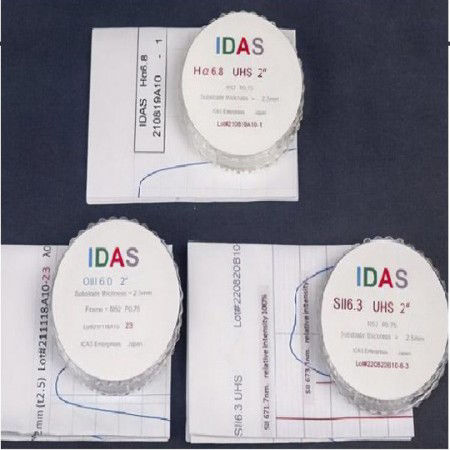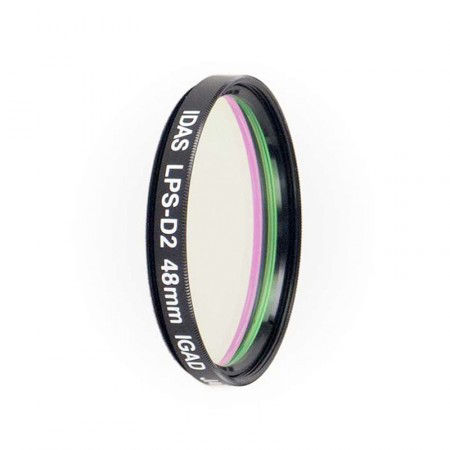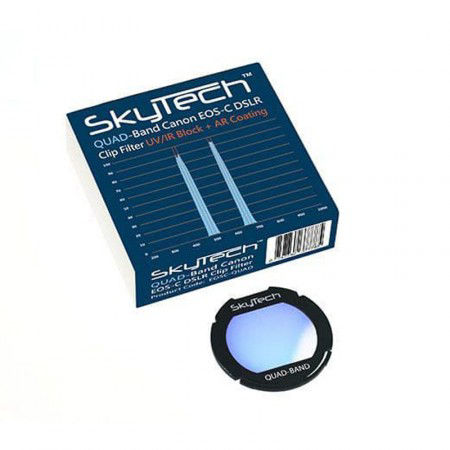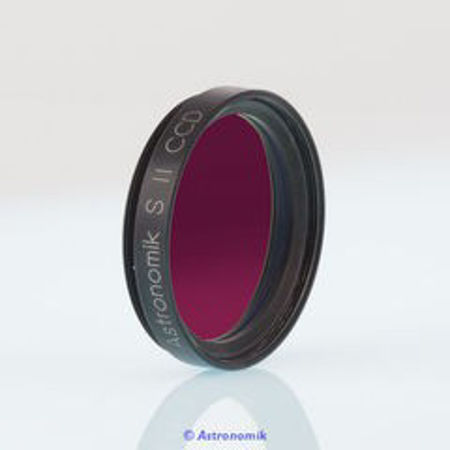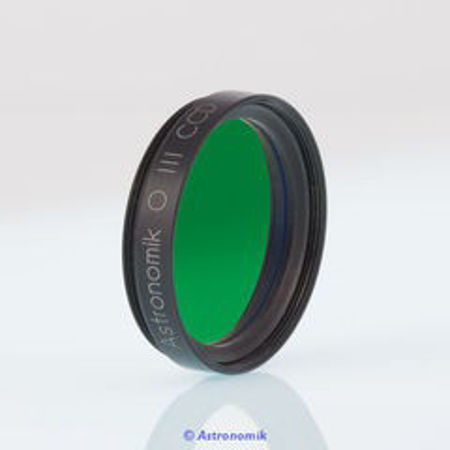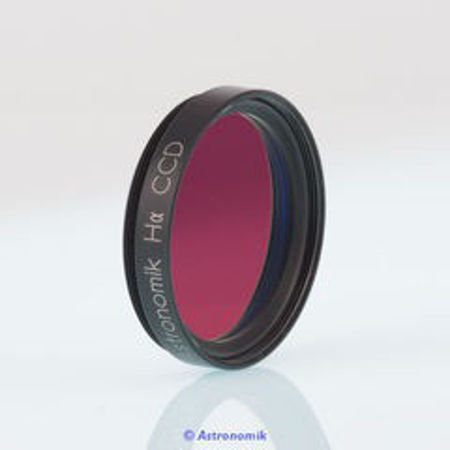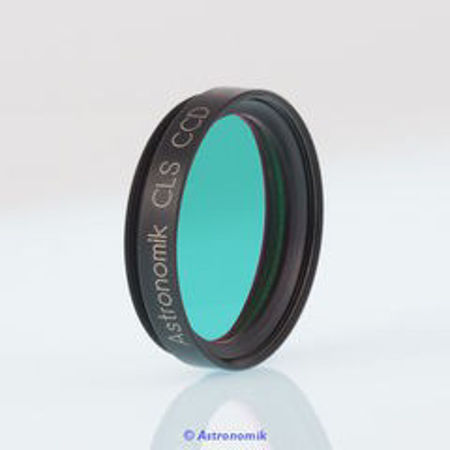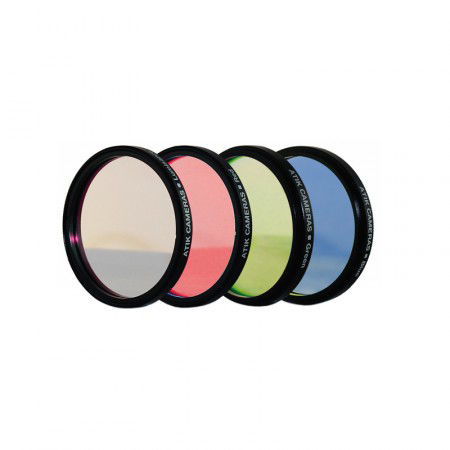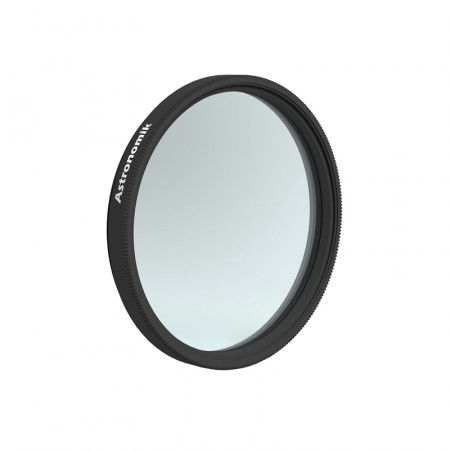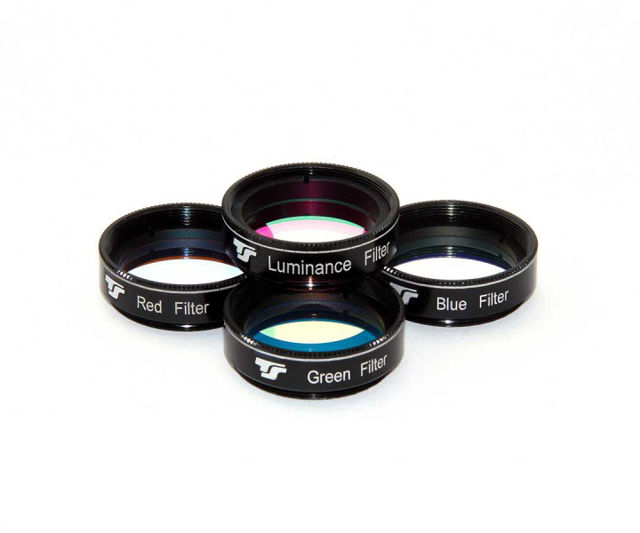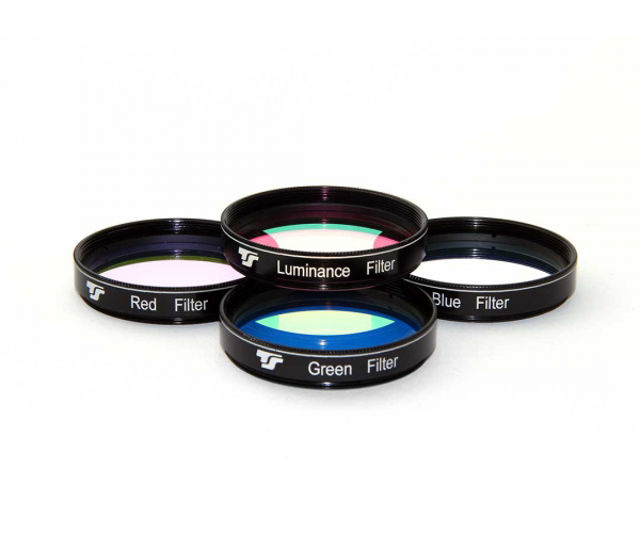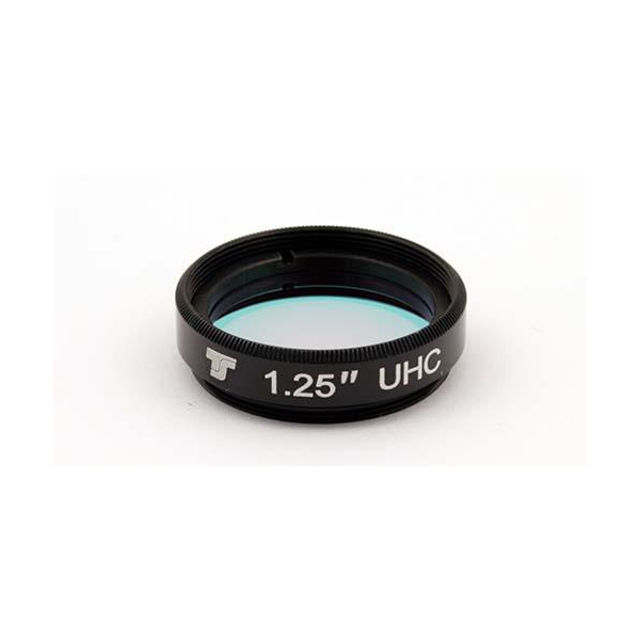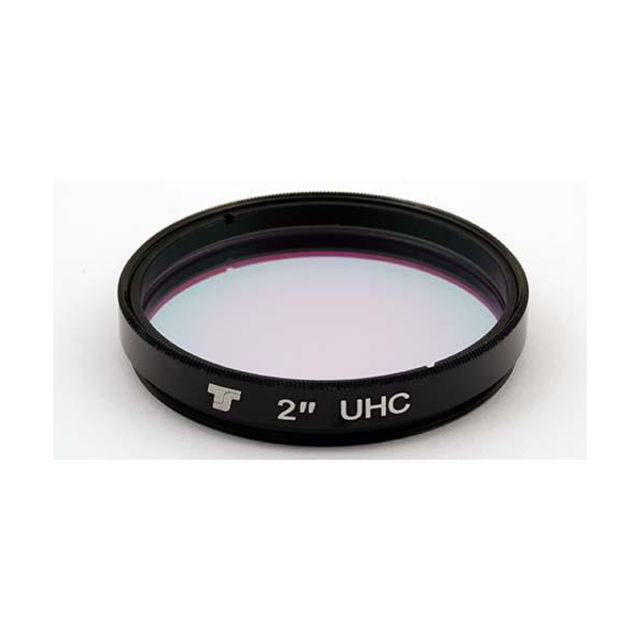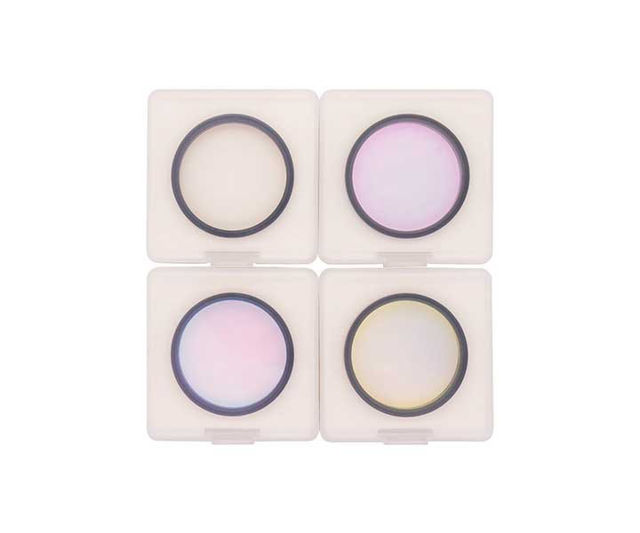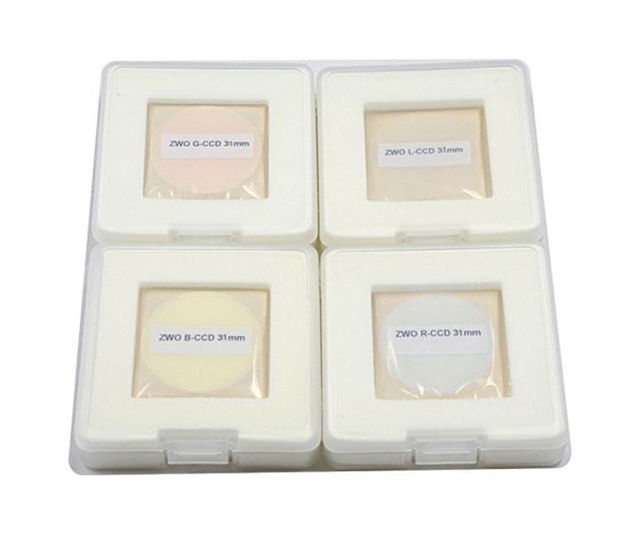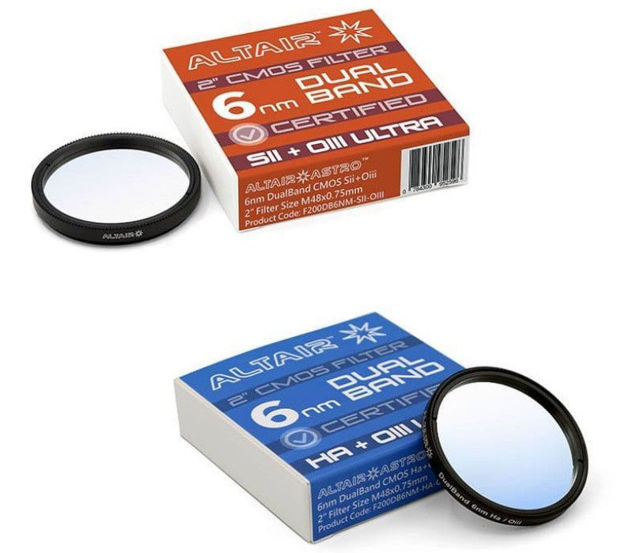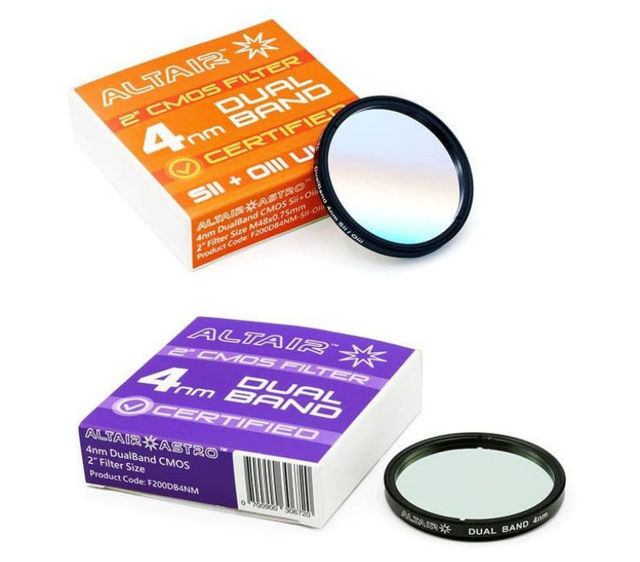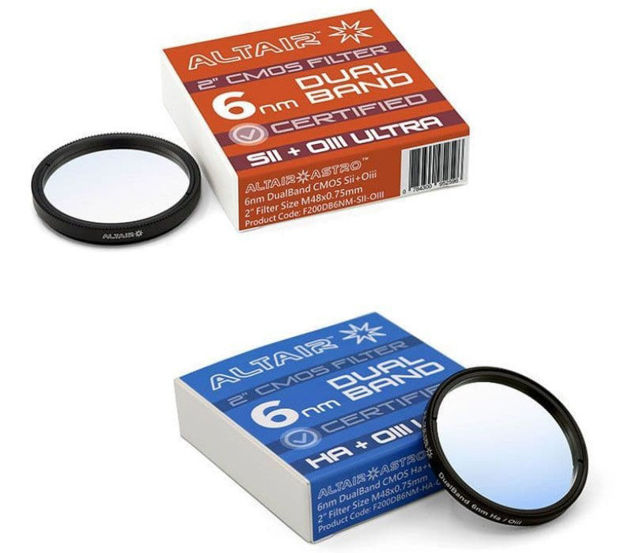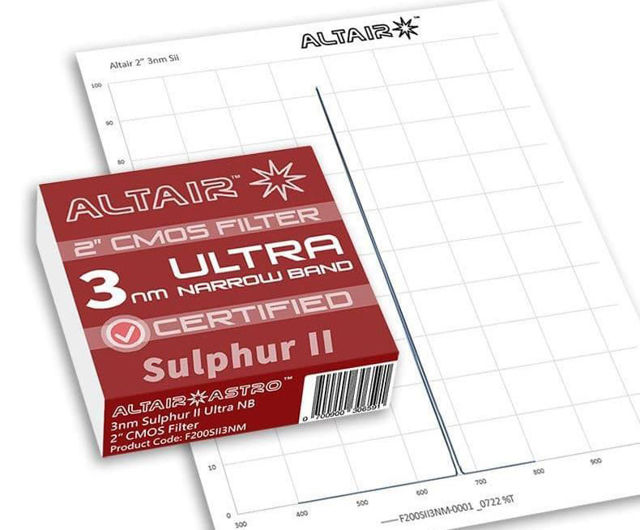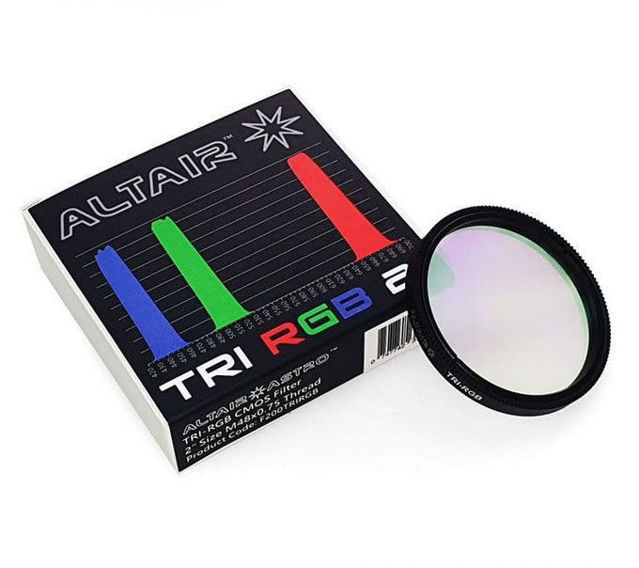CCD Filter for Astrophotography
- Home /
- Optical Accessories /
- CCD Filter for Astrophotography
Filters for Astrophotography

With modern interference filters, amateur astronomers can now achieve excellent image results. The applications include narrow-band emission line filters, broader-band color filters and filters for suppressing artificial light emission.
CCD Filter for Astrophotography
Four 1.25" filters: luminance, red, green and blue for color images of celestial objects with monochrome CCD cameras
179.00 €
Delivery date : 1-4 days
Four 2" filters: luminance, red, green and blue for color images of celestial objects with monochrome CCD cameras
299.00 €
Delivery date : 1-4 days
Reduces light pollution and natural sky glow
65.00 €
Delivery date : 1-4 days
Reduces light pollution and natural sky glow
89.00 €
Delivery date : 1-4 days
The ZWO 2" L-RGB filter set is optimized for astro imaging with monochrome cameras
399.00 €
Delivery date : 1-4 days
The ZWO 36 mm LRGB filter set is optimized for astro imaging. Also suitable for beginners.
259.00 €
Delivery date : 1-4 days
This is the filter for imaging in moonlight or light pollution with a colour CMOS camera - or even in dark-sky conditions if you want total isolation and control over your channels, narrowband-style.
Altair DualBand 6nm ULTRA Filter Features:
- Capture two main emission nebulae bands at the same time, per filter, whilst suppressing light pollution, moonlight, and airglow.
- Acquire more data in less time, opening up your imaging window, even into the summer months when it isn't quite dark.
- If you have the 6nm Sii Oiii Ultra filter and the Ha Oiii filter combo, you can capture twice the Oiii data in each imaging session and combine them for true SHO Hubble style imaging with a colour camera!
- Extremely steep bandpass yields maximum contrast in extreme light pollution: 6nm FHWM centred on 500.7nm Oiii wavelength, 5.5nm FHWM centred on the Sii and Ha wavelengths.
- Halo suppression. We have not had any reports of halos caused by this filter in testing.
- Can be used with One Shot Colour (OSC) CMOS or mono astronomical cameras for luminance data.
- Includes UVIR blocking for both modified and un-modified DSLR cameras, plus an anti-reflection coating for the ultimate in contrast.
- Best performance at focal ratios at F4.8 or slower, however can be used as fast as F3.6, with minimal contrast impact (conservative estimate - faster may be possible). Like any dichroic filter, contrast increases as focal ratio number increases. More info about light pollution filter performance and focal ratio here.
- Available in 1.25" or 2" standard astronomy filter sizes. The filters have standard Astronomy compatible filter threads, and fit inside the Altair Magnetic Filter holders (with appropriate slider), and standard astronomy filter wheels. Choose the 2" version for use with the Altair Canon / Nikon DSLR lens to astro CMOS adaptors. For Hypercam 183C and 533C or 533M, 585C and smaller sensors choose the 1.25" filter. For larger sensors choose the 2" version.
329.00 €
Delivery date : 1-2 weeks
Altair DualBand 4nm Filter Features:
- Capture the two main emission nebulae bands at the same time, whilst suppressing light pollution, moonlight, and airglow.
- More data in less time, opening up your imaging window, even into the summer months when it isn't quite dark yet. Capture twice the Oiii data, whilst obtaining Sii to complement the Altair Ha Oiii DualBand filter.
- Extremely steep bandpass yields maximum contrast in extreme light pollution: 4nm FHWM centred precisely on the target wavelengths.
- Halo suppression. We have not had any reports of halos caused by this filter in testing.
- Can be used with One Shot Colour (OSC) CMOS or mono astronomical cameras for luminance data.
- Includes UVIR blocking for both modified and un-modified DSLR cameras, plus an anti-reflection coating for halo suppression. To see the AR coating in action, please see images demonstrating the same filter with and without the AR coating on the bright star, Capella in exactly the same conditions with the same settings.
- Best performance at focal ratios as fast as F4.8, with contrast increasing as focal ratio increases. More info about light pollution filter performance and focal ratio here.
- The 2" filter has standard M48x0.75mm thread, and fits inside the Altair Magnetic Filter holders, standard 2" filter wheels, plus the Altair Canon / Nikon DSLR lens to astro CMOS adaptors.
899.00 €
Delivery date : 1-2 weeks
Availability acc. to manufacturer :
30 March 2024
30 March 2024
This is the filter for imaging in moonlight or light pollution with a colour CMOS camera - or even in dark-sky conditions if you want total isolation and control over your channels, narrowband-style.
Altair DualBand 6nm ULTRA Filter Features:
- Capture two main emission nebulae bands at the same time, per filter, whilst suppressing light pollution, moonlight, and airglow.
- Acquire more data in less time, opening up your imaging window, even into the summer months when it isn't quite dark.
- If you have the 6nm Sii Oiii Ultra filter and the Ha Oiii filter combo, you can capture twice the Oiii data in each imaging session and combine them for true SHO Hubble style imaging with a colour camera!
- Extremely steep bandpass yields maximum contrast in extreme light pollution: 6nm FHWM centred on 500.7nm Oiii wavelength, 5.5nm FHWM centred on the Sii and Ha wavelengths.
- Halo suppression. We have not had any reports of halos caused by this filter in testing.
- Can be used with One Shot Colour (OSC) CMOS or mono astronomical cameras for luminance data.
- Includes UVIR blocking for both modified and un-modified DSLR cameras, plus an anti-reflection coating for the ultimate in contrast.
- Best performance at focal ratios at F4.8 or slower, however can be used as fast as F3.6, with minimal contrast impact (conservative estimate - faster may be possible). Like any dichroic filter, contrast increases as focal ratio number increases. More info about light pollution filter performance and focal ratio here.
- Available in 1.25" or 2" standard astronomy filter sizes. The filters have standard Astronomy compatible filter threads, and fit inside the Altair Magnetic Filter holders (with appropriate slider), and standard astronomy filter wheels. Choose the 2" version for use with the Altair Canon / Nikon DSLR lens to astro CMOS adaptors. For Hypercam 183C and 533C or 533M, 585C and smaller sensors choose the 1.25" filter. For larger sensors choose the 2" version.
479.00 €
Delivery date : 1-2 weeks
The Altair Astro 3nm ULTRA filters are designed for astro imaging of nebulae with Mono CCD or CMOS cameras, blocking light pollution by cutting out the light pollution wavelengths. The filter blocks UV IR and has an anti-reflection AR coating to suppress halos around bright stars.
558.00 € 474.30 €
Delivery date : 1-2 weeks
This filter was developed to suppress light pollution for colour and monochrome cameras and offers more balanced RGB colours.
- ltair TRI-RGB is great for broadband objects such as mixed emission / reflection nebulae, comets, dust clouds and galaxies, but it also allows the major emission nebulae lines through. It covers both broadband AND narrowband targets.
- TRI-RGB complements the Altair TriBand and DualBand filters by adding star colours.
- TRI-RGB and works with fast or slow focal ratio telescopes and camera lenses.
- TRI-RGB is not only for light pollution control. It works very well under dark skies too by enhancing colour purity, airglow and reducing channel crossover in colour CMOS and DSLR cameras.
- Although primarily intended for colour cameras, TRI-RGB can be used for a cleaner luminance channel with a mono camera.
- High transmission peaks with steep sides enhance contrast, together with almost total suppression of unwanted light, at OD4/5 (0.01%~0.001%) over the majority of unwanted visual wavelengths.
239.00 € 219.00 €
Delivery date : 1-2 weeks
Altair QuadBand is the new trend in light pollution filters for deep-sky imaging of emission nebulae with colour CMOS, CCD, and DSLR cameras. Altair V2 Filter Technology produces even better blocking of unwanted wavelengths, higher transmission, and no halos. The result is a better signal to noise ratio for imaging emission nebulae with a DSLR or CMOS Astro camera. The 35nm passband not only makes the QuadBand V2 compatible with fast focal ratio lenses and telescopes, but also allows visual use with a relatively small telescope in urban locations. Brighter emission nebulae can be observed in urban conditions with a darker background. This is the new QuadBand V2 Coating technology which includes: Anti-Halo coating on both surfaces to reduce reflection artefacts from reducers and camera lenses. Increased blocking of UV, IR and unwanted visual range wavelengths. UV OD7 (T0.00001%) Visual OD5 (T0.001%) and IR OD4 (T0.01%) for the ultimate in skyglow blocking. An order of magnitude better than foreign filters. Higher transmission % of desired wavelengths Ttop 95% (Average 5% higher transmission of desired wavelengths). Ha and Oiii wavelengths at 35nm FWHM for with less tail-off to reduce unwanted light pollution. It's even compatible with fast scopes, like Altair F6 refractors which operate at F4.8 with reducers, and the F2 Celestron RASA and Hyperstar. Includes UVIR blocking for both modified and un-modified DSLR cameras, plus an anti-reflection coating to reduce halos as much as possible. Narrowband Bi-Colour imaging is a growing new trend in astrophotography, especially popular in light polluted areas, or for imaging in rural areas in moonlight. Now you can capture the two main emission nebulae bands at the same time, whilst suppressing light pollution, moonlight, and airglow. Capture more data in less time, and open up your imaging time window - even into the summer months. Altair QuadBand light pollution filters work by isolating the primary nebulae emission zones in the red and blue/green wavelengths, and separating them into two main "zones" with a wide separation for easy capture with a colour camera - all in one exposure! Not only is capture very convenient, but processing is easy too, thanks to the wide separation of the green/blue and red "zones". Light pollution control is extremely effective and LED light is also significantly reduced, thanks to the effects of Rayleigh scattering. Sensitive OSC or "One Shot Colour" CMOS cameras like the #Hypercam183C capture these wavelengths very efficiently, and allow them through the Bayer matrix. The filters also work with DSLRs (APS-C sensor size modified cameras are best, but normal ones will also work). When you have the complete stack of exposures, processing is relatively easy because of the large separation in colour. You can also use the Quad band and Tri-Band filters as a "super luminance filter" for imaging nebulae with Mono cameras. A quick overview of the Altair Filter family: QuadBand Filter - combines Sii AND Ha into a red zone, and H-beta + Oiii into a green/blue zone. (Recommended for moderate light pollution and skyglow, used with colour cameras). TriBand Filter - combines Ha into a red zone, and H-beta + Oiii into a green/blue zone. (Recommended for higher light pollution, used with colour cameras). DualBand Filter - separates the red Ha and blue Oiii channels even more distinctly with even deeper blocking. (Recommended for severe light pollution such as within built-up areas such as cities. Used with colour cameras). NarrowBand mono camera filter - these isolate single bands, so you only capture one wavelength per filter such as Oiii or Ha or Sii, and they are mostly used with mono B&W astronomy cameras. Separate sets of exposures are required with each filter. Filter Specifications: 1st band, CWL495nm FWHM35nm 2nd band, CWL 660nm FWHM 35nm 1.85mm thick optical glass with 30 arc sec parallelism. UVIR Block and Anti-Reflection Coating. Scope of Delivery: Filter 2"
Item condition: new, but not original packed
Item condition: new, but not original packed
226.00 €
Delivery date : 1-4 days
